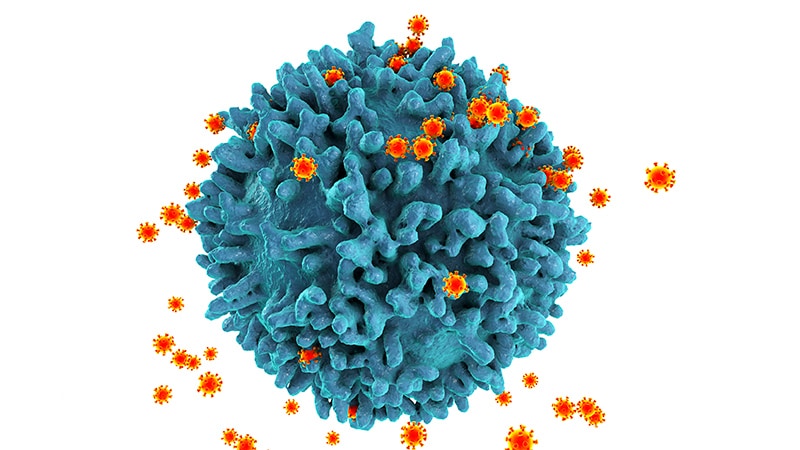TOPLINE:
Most women living with HIV achieved an immunologic response after 2 years of initiating antiretroviral therapy. A higher baseline HIV viral load increased the odds of an immunologic response in women living with HIV, but this association diminished among those who acquired HIV through intravenous drug use.
METHODOLOGY:
- Researchers conducted a register-based cohort study to determine the prevalence and factors associated with immunologic response in women living with HIV in Sweden.
- They analyzed 841 women with viral suppression (mean age, 37 years; baseline CD4 T-cell count, < 500 cells/μL) diagnosed with HIV after 2000.
- The primary outcome was an immunologic response 2 years after initiating antiretroviral therapy among those who achieved sustained viral suppression within 6 months of treatment initiation.
TAKEAWAY:
- Among the women studied, 90% (95% CI, 0.88-0.92) achieved an immunologic response after 2 years of follow-up.
- Having a baseline HIV viral load of ≥ 100,000 copies/mL increased the likelihood of achieving immunologic response (adjusted odds ratio, 1.81; 95% CI, 0.96-3.41), except in women who acquired HIV through intravenous drug use.
- No significant associations were found between immunologic response and baseline CD4 count, antiretroviral therapy experience, or age.
IN PRACTICE:
“It supports earlier studies identifying the level of baseline HIV RNA viral load as an important factor and identifies the potential varying impact that HIV acquisition mode may have on this association,” the authors wrote.
“Future studies incorporating additional sex-specific factors are essential to refine our understanding and improve tailored clinical care strategies,” they added.
SOURCE:
This study was led by Josefin Nilsson, Unit of Infectious Diseases and Dermatology, Department of Medicine, Huddinge, Karolinska Institutet, Stockholm, Sweden. It was published online on June 12, 2025, in HIV Medicine.
LIMITATIONS:
This study included data only from women diagnosed after 2000. The small sample size decreased the model’s power, thereby limiting the number of variables that could be included. Additionally, the study did not include information on female-specific factors, such as the use of hormonal treatments, which may have influenced immunologic response.
DISCLOSURES:
This study was supported by a grant from the Swedish Doctors against AIDS Research Foundation and an unrestricted Nordic Fellowship Grant from Gilead Sciences. Some authors declared receiving lecture fees or advisory board fees from various sources, including GSK/ViiV and Gilead Sciences.
This article was created using several editorial tools, including AI, as part of the process. Human editors reviewed this content before publication.
